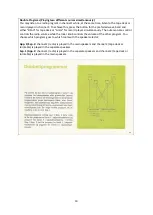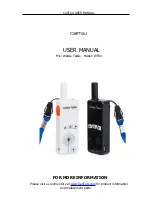
3
First, you should get good antennae for AM and FM
At the rear of the unit, you will find sockets for connection of antennae.
Wire antenna.
The unit is designed for excellent reception with moderate antenna lengths, but
you will get the optimum result with a 15-20 m long wire antenna. Attach the earth connection to
the nearest cold water pipe using a clamp.
Antenna with shielded cable.
If there are strong electrical noise fields around your house, you
may need a shielded cable between your antenna and the radio. Such a system may be a
combined AM and FM antenna system.
FM antenna.
The Huldra table model (8-56) has a built-in FM antenna which may be sufficient in
places with good reception. Otherwise, you will need a folded dipole antenna mounted outside of
your house or in your attic, where installation and maintenance may be easier.
The antenna shall be mounted with the loop perpendicular to the direction to the
transmitter/sender. You may need to try different locations and orientations to avoid reflections
and achieve an optimum result.
You may make an indoor antenna from ordinary, unshielded flat antenna cable with two parallel
leads, impedance 240-300 ohm. Make the antenna loop from a cable length of 135 cm. Remove a
short length of isolation on both ends and solder the cores together, as shown on the illustration.
Cut one of the cores at the middle and solder in a feeder cable to the radio receiver. In more
challenging situations, better results can be achieved by using a more expensive antenna with
several elements.
Translation of terms in Fig. 1
LODDES = solder
TIL RADIOAPPARATETS UTTAK FOR FM-ANTENNE = to the radio
receiver’s sockets for FM antenna.




































